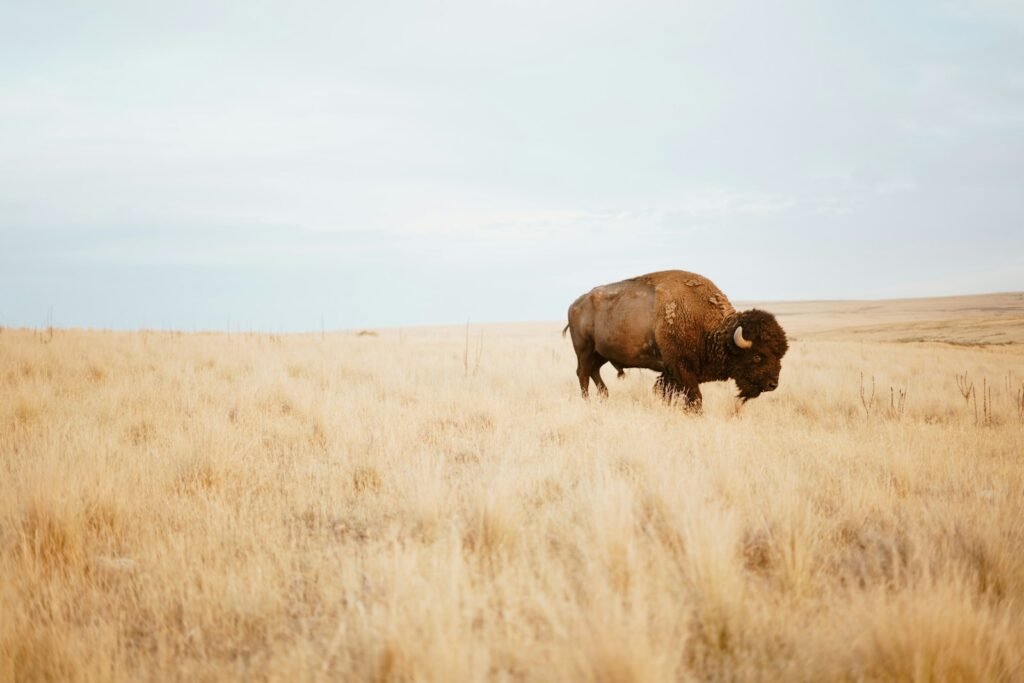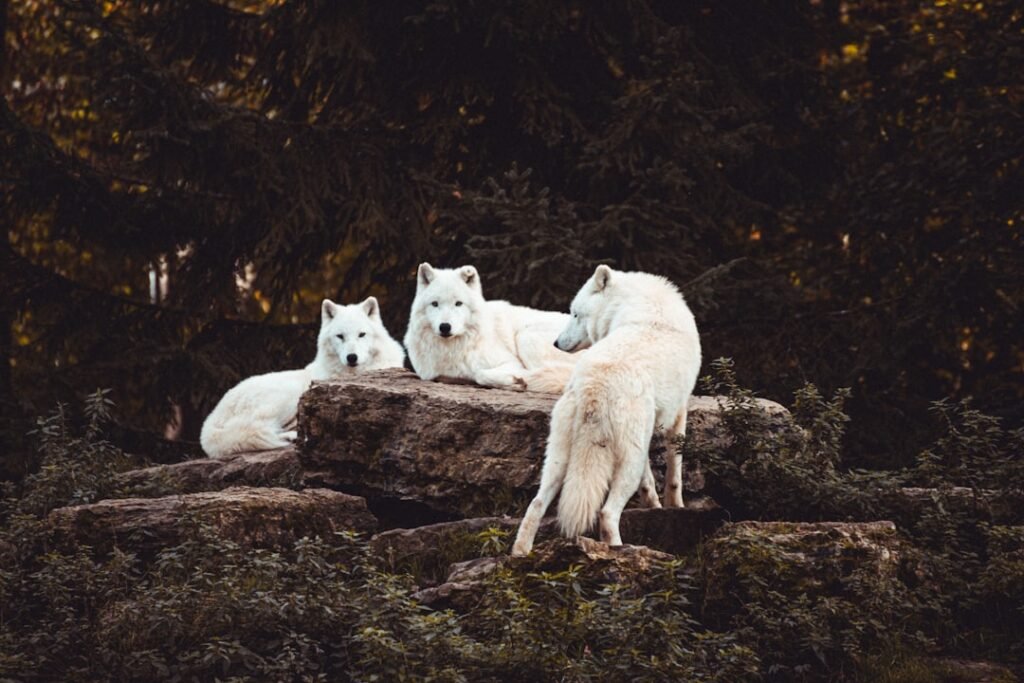Some creatures carry themselves like they know the spotlight is on them, and the wild notices. We often reach for the lion as the symbol of boldness and command, but that fierce, solar energy shows up in surprising places – from deep oceans to frozen forests. Scientists have been mapping how leadership and audacity operate in animal societies, revealing patterns that feel almost theatrical. The mystery isn’t whether animals lead, but how they do it without speeches, boardrooms, or lines on a résumé. That’s where the research gets exciting – and where our old assumptions get a healthy shake.
Solar Kings of the Savanna

Lions live the metaphor people assign to them: public, loud, and unashamedly territorial. Pride life is a political project powered by coalitions of males who defend space and cubs, and by females who anchor social bonds and hunts. Boldness shows up in the willingness to approach intruders and in the thunderous chorus of territorial roars that can travel miles. A dark, full mane can signal maturity and vigor, and rivals often treat that visual like a flashing warning. When I first watched a coalition patrol at dawn, their pacing felt like a moving border, a living line the plains respected.
Leadership in prides is practical, not ceremonial, with different lions stepping forward as conditions change. Experienced lionesses may drive a hunt, reading wind, cover, and the panic of fleeing prey like a seasoned conductor. Males, meanwhile, take the heat when defending against hyenas or rival coalitions, projecting risk outward so the pride can rest. Cubs learn by shadowing adults who show, not tell, and boldness courses through these lessons in very real stakes. It’s not bluster; it’s survival arranged in a hierarchy of courage.
The Matriarch’s Map

Elephant families rally around a matriarch who leads with memory as much as muscle. Her mental map holds years of waterholes, safe corridors, and danger zones, and in hard seasons that knowledge is the difference between life and loss. Older matriarchs are often calm in chaos, sorting threat from noise when lions growl or people appear on the horizon. Their leadership isn’t about volume; it’s about decisive movement and the trust that flows behind it. I remember standing downwind in a baked riverbed as a matriarch paused, weighed the air, and then turned her family into shade like a tide changing direction.
Research has shown that social knowledge – who’s who, what call means what – scales with age in these leaders. When unfamiliar roars echo or strange scents drift in, matriarchs often set the tone: stand firm, bunch tight, or move now. Calves read that calm like a script and copy it later, a kind of cultural inheritance that keeps groups cohesive. Even their low-frequency rumbles seem to knit consensus, especially during long-distance travel. In a world of fragmenting habitats, a matriarch’s map becomes a priceless archive written in footsteps.
Commanders of the Current

Orcas are ocean strategists, living in tight-knit families where older females frequently pilot the group. These matriarchs often hold the keys to seasonal movements and hunting know-how, especially when preferred prey becomes scarce. Coordinated attacks – whether corralling fish into bait balls or flipping prey off ice floes – show how leadership can look like choreography. The boldness isn’t reckless; it’s calculated risk, refined by decades of learning and shared through close bonds. Watching them track along a tide line feels like watching diplomats with perfect timing slip into a crowded room.
What fascinates researchers is how knowledge flows from generations that have seen many winters and many failures. In some populations, post-reproductive females contribute outsized value as navigators and problem-solvers, keeping families fed through lean years. That resilience reads as charisma from the surface, but it’s really wisdom applied at speed. Vocal dialects help families coordinate and maintain identity, a living culture humming under the waves. When seas change, these commanders shift tactics, keeping the family’s story moving forward.
Pack Leadership, Rewritten

Wolves complicate the old “alpha” myth by showing us family over rank. Packs are usually parents and their offspring, and leadership often rests with the breeding pair – more partners than tyrants. Movement decisions can be shared, with certain wolves stepping up more often on travel routes or hunts, especially when experience meets opportunity. Bold individuals may spearhead pursuits or investigate new risks, but authority feels earned and flexible. The real drama is coordination, not domination, and the line between leader and follower blurs in the snow.
Field studies tracking travel order and decision points reveal a nuanced choreography shaped by terrain, prey behavior, and recent success. Older females sometimes initiate key moves, while confident yearlings test boundaries and gain social capital. A wolf that brings momentum – by finding scent, pushing a chase, or locating a safe path – can carry the pack with it. The lesson is humbling: strength is multiplied when voices align. That’s leadership that looks less like a crown and more like a compass passed from paw to paw.
Alliances in the Blue

Bottlenose dolphins run on politics that would make city hall lean in. In places like Shark Bay, males form layered alliances that can last years, with leaders emerging as brokers who hold groups together. These dolphins aren’t just strong; they’re persuasive, steering allies during high-stakes interactions while maintaining key relationships. Signature whistles act like names, and social memory keeps track of favors, slights, and strategic partners. It’s charisma with receipts, built from countless close encounters in a complicated sea.
Females, meanwhile, lead in quieter ways that shape the future: guiding calves, choosing company, and navigating the risks of human-dominated coasts. Boldness here might look like approaching boats, investigating novel gear, or switching techniques when prey shifts. Leadership can be subtle, measured in who follows whom when conditions turn uncertain. The ocean rewards those who can read it, and these alliances bend unpredictability toward stability. If lions are stage actors, dolphins are dealmakers – both convincing, both commanding in their element.
Why It Matters

Understanding boldness and leadership in animals isn’t a personality quiz; it’s a conservation tool. When we know who makes decisions and how information moves, we can plan wildlife corridors, translocations, and protections that don’t break social logic. Remove a matriarch, a leading male, or a seasoned navigator, and a population can stumble in ways raw numbers don’t predict. Traditional approaches often assumed every individual was interchangeable, but behavior shows us that a few key animals carry disproportionate knowledge. Paying attention to those anchors raises survival odds for entire groups.
This perspective also helps us retire outdated myths that warp policy and public opinion. Dominance alone explains very little; context and cooperation do the heavy lifting across ecosystems. By tracking persistence, initiative, and social influence – not just size or aggression – scientists can forecast which animals keep groups cohesive during shocks. I think of it like reading a jazz band instead of a marching line: the solos matter, but so does the listening. In the end, saving leaders can save cultures, and saving cultures can save species.
The Future Landscape

New tools are pulling leadership out of the shadows and into data-rich timelines. Biologging tags, drones, and AI models are stitching movement, sound, and behavior into maps that show who initiates, who follows, and when plans change. Noninvasive genetics and hormone analysis add layers – kinship, stress, reproductive status – that clarify why certain individuals step up. As climate pressure reroutes migrations and scrambles food webs, those maps will be essential for adaptive conservation. We’re entering an era where we can pair charisma with proof.
The challenge is using that power ethically and at scale. Data privacy has meaning for animals too, especially where poaching or harassment could target known leaders. Managers will need to protect knowledge hotspots, fund long-term monitoring, and design reserves that keep social networks intact. Community-led conservation, Indigenous stewardship, and cross-border cooperation can turn insights into durable practice. The goal is simple but hard: let leaders keep leading, even as the world they know transforms.
A Simple Way to Help

Start by backing the quiet work that protects social structures. Support organizations that secure elephant corridors, enforce marine no-wake zones near cetaceans, and expand predator-friendly ranching that reduces retaliatory killings. If you boat, slow down and give marine mammals the space to communicate; if you hike, respect closures that shield denning or breeding seasons. Share accurate science about wolves, lions, and dolphins to push back on old dominance myths that still drive bad policy. And if you’re lucky enough to watch wildlife in the field, be patient – leadership often looks like a pause before a perfect move.
Citizen science projects that log sightings and behaviors can feed the datasets guiding tomorrow’s protections. Local choices – keeping dogs leashed in sensitive areas, securing trash, using wildlife-friendly lighting – make neighborhoods safer for bold urban adapters. Ask zoos, aquariums, and tour operators how they safeguard social groups and reduce stress, then choose with your wallet. Support long-term studies that track individuals over many years; that’s where the real stories of leadership emerge. Small actions, steady and collective, help these s keep writing their own futures.

Suhail Ahmed is a passionate digital professional and nature enthusiast with over 8 years of experience in content strategy, SEO, web development, and digital operations. Alongside his freelance journey, Suhail actively contributes to nature and wildlife platforms like Discover Wildlife, where he channels his curiosity for the planet into engaging, educational storytelling.
With a strong background in managing digital ecosystems — from ecommerce stores and WordPress websites to social media and automation — Suhail merges technical precision with creative insight. His content reflects a rare balance: SEO-friendly yet deeply human, data-informed yet emotionally resonant.
Driven by a love for discovery and storytelling, Suhail believes in using digital platforms to amplify causes that matter — especially those protecting Earth’s biodiversity and inspiring sustainable living. Whether he’s managing online projects or crafting wildlife content, his goal remains the same: to inform, inspire, and leave a positive digital footprint.



